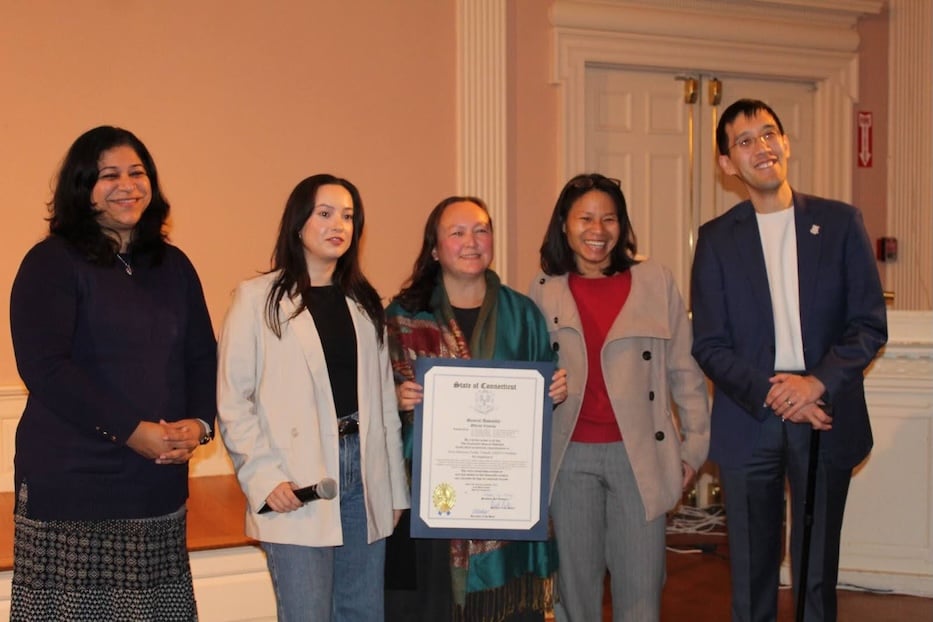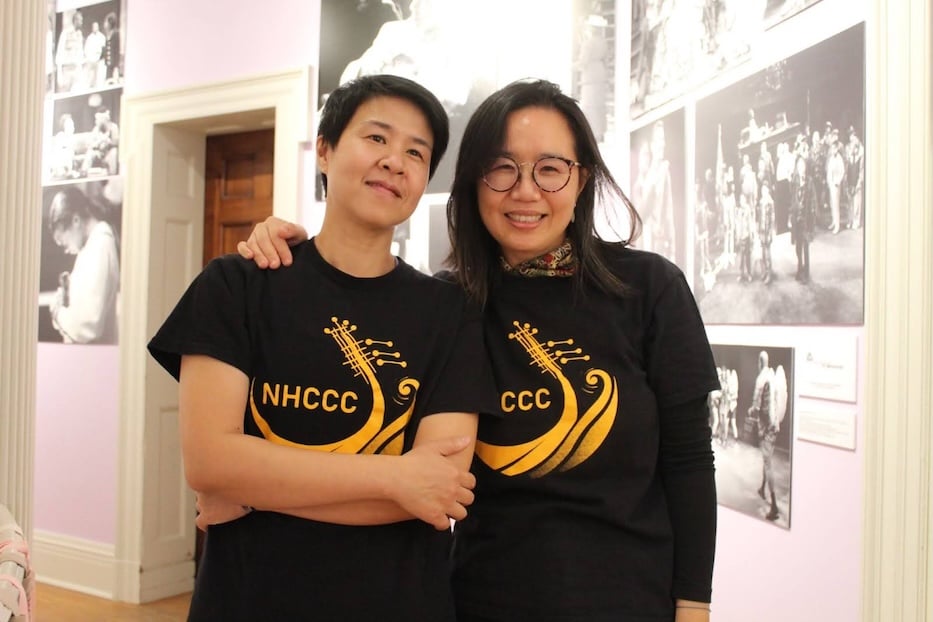
Abiba Biao Photos.
The layered, melodious voice of a guzheng sang out over an audience, filling the second floor of the New Haven Museum with its sound. At first, it offered up a flurry of notes, the sounds swirling into each other. Then, the sound deepened, contemplative and so smooth it seemed to flow like water. As she played, musician Lely Evans let the melody transport her hundreds of years back in history, and then right into the present.
Su Shi’s words, layered over Evans’ rendition of “Autumn Moon over the Han Palace,” graced Whitney Avenue last Sunday during “Celebrate Asian Heritage at New Haven Museum,” an afternoon belatedly fêting both Diwali and the the Mid-Autumn Festival across the Asian diaspora. With music, spirited dance and a celebration of both food and film, the event became a robust recognition of Asian American and Pacific Islander (AAPI) heritage, and the beauty of its breadth in New Haven and Connecticut.
In addition to performances from the New Haven Chinese Cultural Cooperative (NHCCC), the afternoon featured dance from Yale Rangeela, Yale’s undergraduate Bollywood fusion dance team, and a screening of “Off the Menu: Asian America,” a feature-length documentary followed by a Q&A session with the audience.
“South Asian communities, East Asian and South East Asians are all a really big part of Connecticut's Asian American population. And so, to have this Mid-Autumn Festival, Diwali celebration, it's important in terms of just basic representation” said Jennifer Heikkila Diaz, co-chair of the Asian Pacific American Coalition of Connecticut.

Diaz mentioned that her overarching goal is to establish partnerships with museums across the state to elevate AAPI experiences and culture. Current museums participating in this initiative include the Connecticut Museum of Culture and History in Manchester, which hosted its third annual Lunar New Year celebrations in February, and the New Britain Museum of American Art.
Diaz also pointed to the influence museums have as “third spaces” for the public, beacons of cultural connection that encourage education and foster cross-cultural dialogue. Often, members of minority communities are pressured to “always be the ones who have to educate everybody,” she said. Partnering with institutions increases an organization or initiative’s reach, while creating an environment conducive to learning about something new.
That was certainly true throughout Sunday’s celebration, as attendees filled the space and learned in the process. Diwali, also known as Deepaval or the “Festival of Lights,” is one of the biggest end-of-year festivals in India and is also celebrated in countries with a South Asian diaspora like Nepal, Malaysia, Fiji and others. Diwali’s date is determined by the Hindu lunar calendar and varies annually, but typically falls between October and November. Diwali is celebrated over five days and while customs vary based on regional traditions, festivities commonly entail families lighting clay oil lamps called “diyas” and enjoying food.
The Mid-Autumn Festival, or Moon Festival, is a harvest festival celebrated in China, with analogues in South Korea and Japan as well. Following the Chinese lunar calendar, the festival is held on the 15th day of the eighth lunar month (this year, it fell on October 5th). The festival includes evening festivities such as lighting lanterns, eating moon cakes and moon viewing.

Chia-Yu Joy Lu and Lely Evans.
Evans, board president and cofounder of the NHCCC, described Thanksgiving as a parallel to the Mid-Autumn Festival.
“Families get together and the round moon symbolizes harvest and reunion,” chimed in Chia-Yu Joy Lu, artistic director of NHCCC.
During NHCCC's set, some of the songs showcased their Taiwanese heritage. The setlist consisted of 11 songs, with the first piece of the concert being Diu Diu Dang’a - A Train Song. A folk tune which originated from Yilan County, Taiwan, the song holds deep sentimental value for Evans, saying that it brings her “back to my childhood.” Trains are a popular mode of transportation, with many people traveling to join their families for the Mid-Autumn Festival.
“We're sharing our culture, we’re sharing what we grew up with, and we're sharing this music with an audience,” Lu said. “Hopefully, when they come, they understand a little bit more about the Chinese traditional music and instruments.”
Evans also stressed the transformative and communal power of performing arts, describing music as a “universal language.” Performances are not just new experiences for listeners but for cooperative members as well. Lu pitched in, saying that while many members have musical backgrounds, they are learning how to play traditional Chinese instruments.
“We do have a pretty diverse membership in our cooperative and I think as much as sharing our culture with the general community out there, within our group too, you know, our members are always having some interesting exchanges.”
“I'm always pleasantly surprised by how much people love hearing our music and being at our shows,” Evans added. “It makes me really, really happy to see people really happy.”